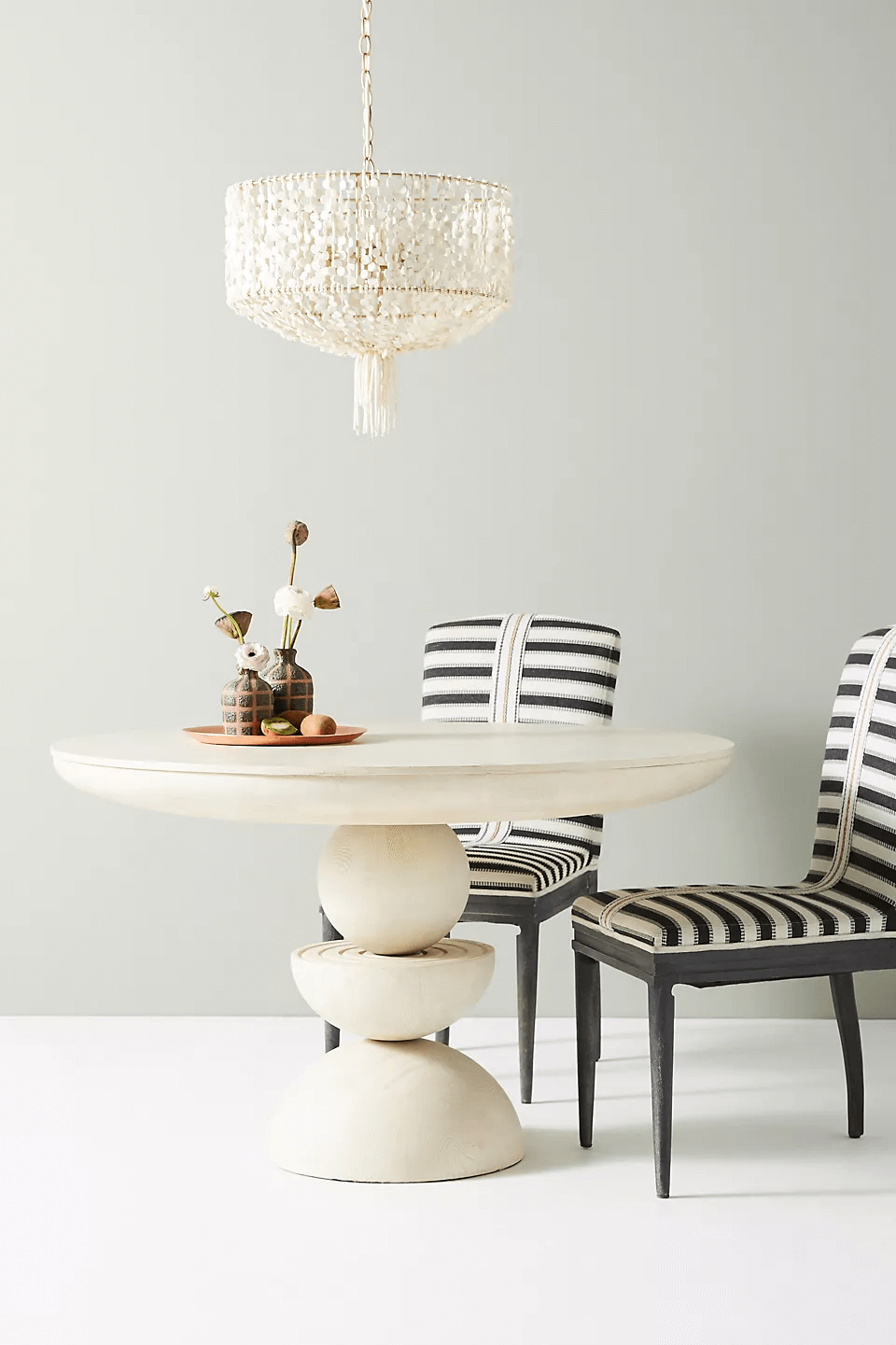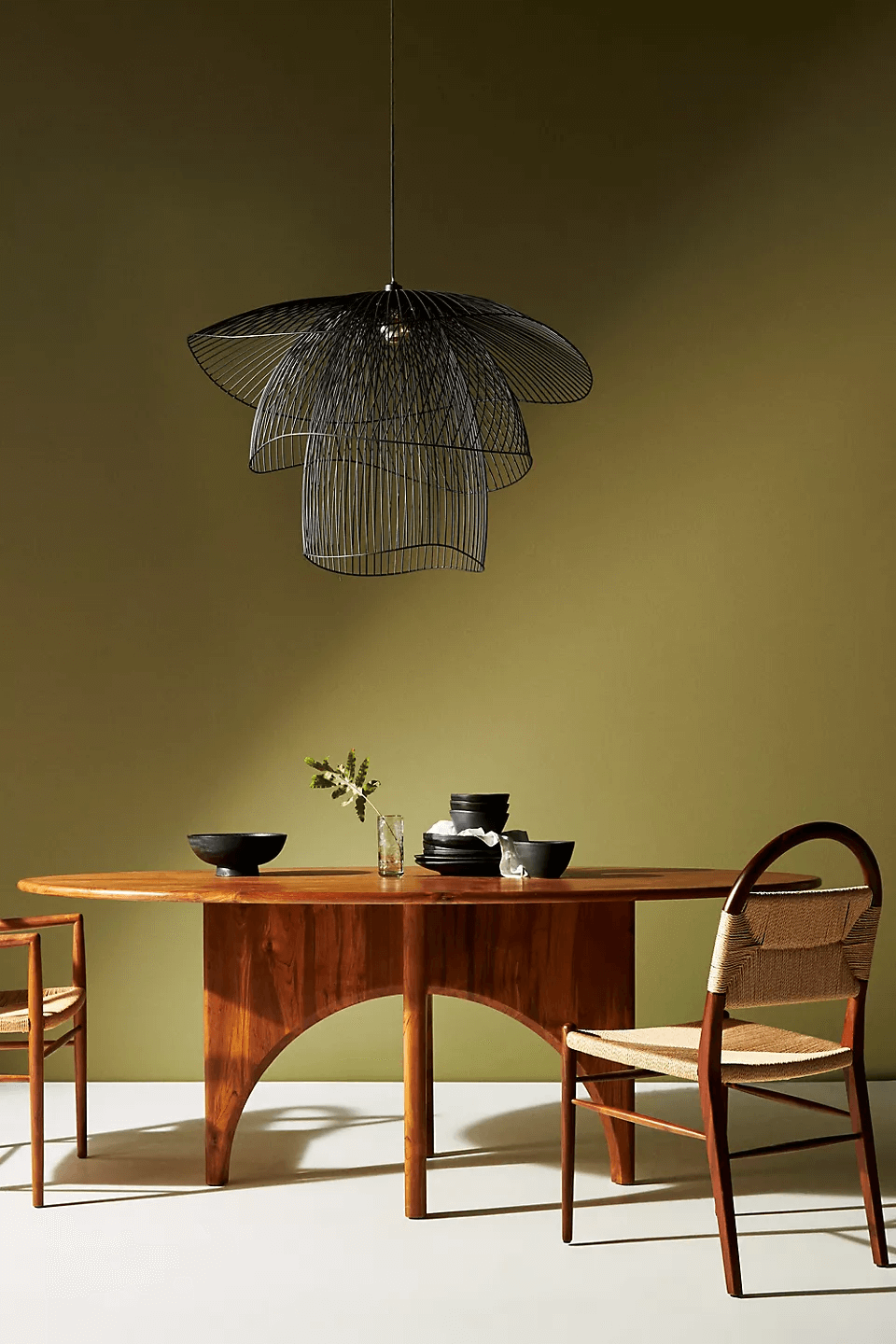How To Choose The Right Dining Table For Your Home
The Style Diary is supported by its readers. We may earn an affiliate commission when you buy through links on this website. Learn more.The dining table holds a special place in our homes. It’s more than just a piece of furniture; it’s where families come together over meals, sharing stories and catching up on the day’s events.
Whether you’re helping with homework, hosting elegant dinner parties, or celebrating birthdays and holidays in style, the dining table plays a central role in creating these memories and fostering connections.
Your dining table has an important job so skimping on quality won’t work here! Invest well if you want it to last a long time.
When it comes to selecting a new dining table, good looks are subjective because everyone has their own tastes. However, there are some essential things that everyone should consider.
In this post, I’ll cover exactly what those considerations are!
SPACE & SHAPE
These two things are probably the most critical, because no matter how gorgeous a dining table is that you’ve had your heart set on, if it doesn’t fit…it just doesn’t fit!
Measure the length and width of your dining area, taking into account the room’s shape and any existing furniture or walkways.
This will help you understand the maximum size your new table can be while still allowing for comfortable movement around the space.
If possible, aim for a minimum of at least 1 metre of clearance between the table and other objects or furniture to avoid a cramped environment.
Quick Tip: When selecting an area for your table, remember to factor in space for chairs!
Image | Unruh Furniture
Round tables work well in square rooms as do square tables, they take up less room and leave a decent amount of space around all four corners of the room.
Rectangular and oval tables complement elongated or rectangular-shaped rooms.
Drop Leaf Tables & Wall-Mounted Tables
If your dining table area is in the kitchen that’s tight for space or you only have a small area for it in the living room or dining room, you could opt for a table that is super versatile like a drop-leaf table.
It’s a smart choice for tight spaces, offering the flexibility to expand when you need a larger eating area.
You can also find wall-mounted drop-leaf tables and fold-down tables with storage that neatly tuck away against the wall when they’re not being used.
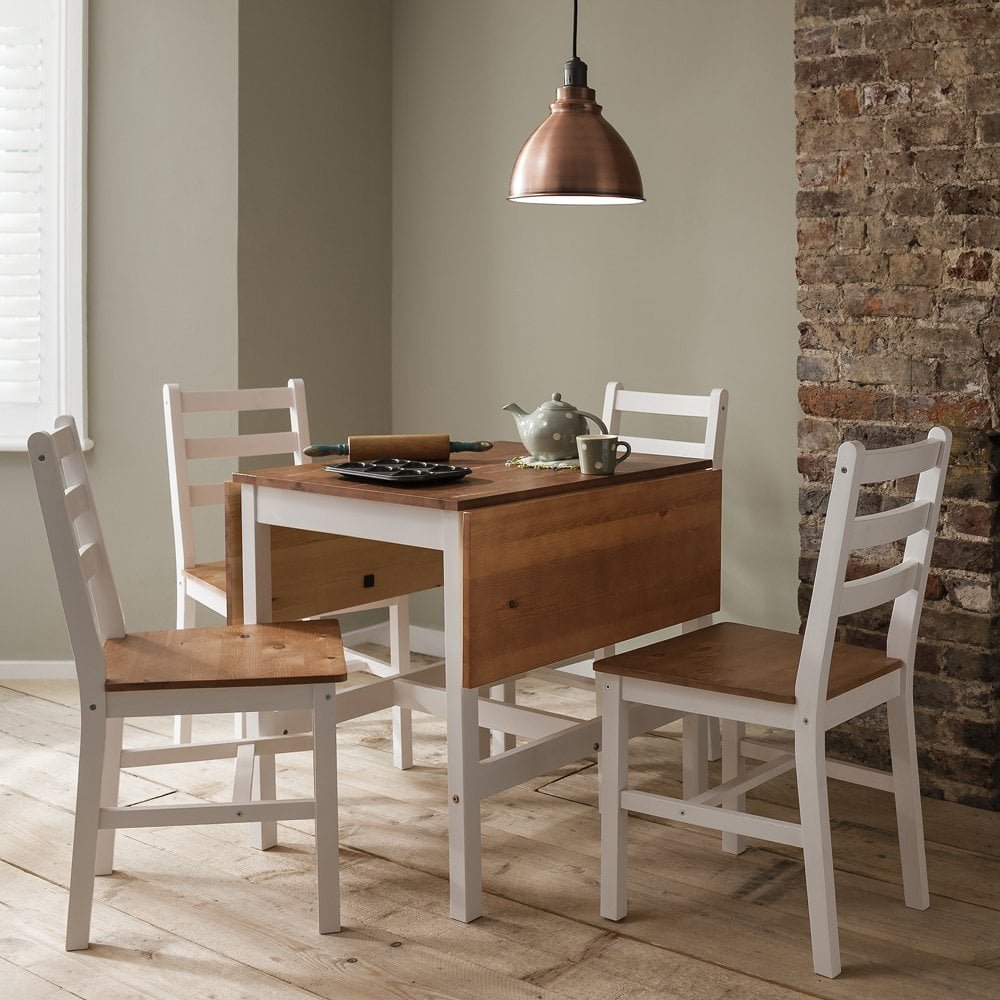
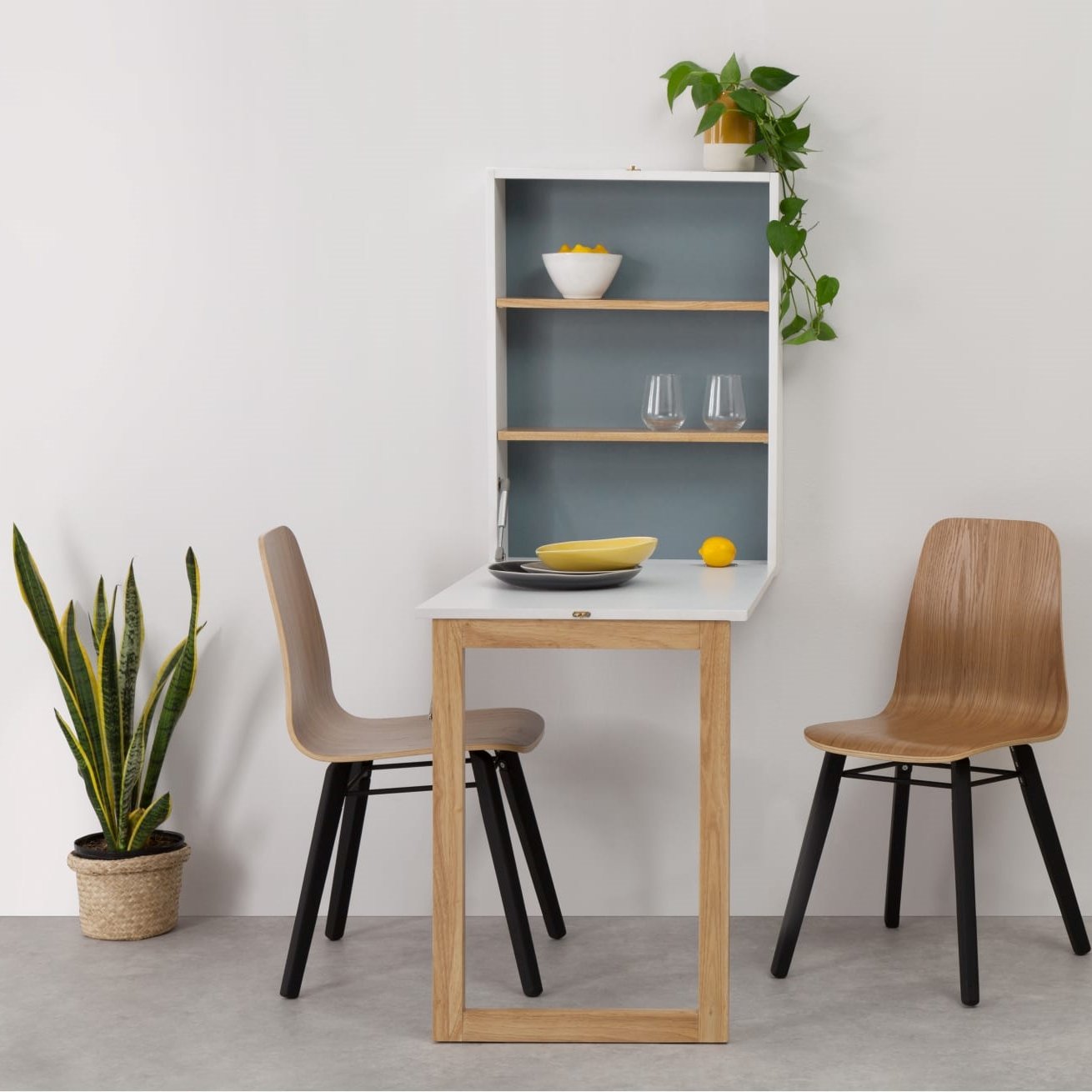

Round Tables
Circular tables bring people closer together, fostering a warm atmosphere with plenty of room to manoeuvre around them.
If your family’s living room is a lively space, filled with the energetic laughter and playful antics of young children, round tables emerge as the safer choice, eliminating the worry of sharp corners and potential accidents.
Moreover, circular tables complement square rooms, creating a snug and inviting ambience. Their rounded forms stand in delightful contrast to the room’s angles, encouraging a cosy gathering space where conversations flow freely and attention is drawn to captivating centrepieces.
And let’s not overlook their practicality! Compact and versatile, round tables offer a great workaround if you have a small nook like a semi-circular bay window area, where a traditional square or rectangular table simply wouldn’t fit.
Oval Tables
When you opt for an oval table, you’re essentially blending the best features of both rectangular and round tables.
Oval tables are the sweet spot between the straightforward lines of a rectangular table and the cosy vibe of a round one.
Like round tables, ovals lack those bothersome sharp corners, making them a safe bet for households with kids too.
Plus, oval tables have this knack for fitting in seamlessly with any decor vibe, whether you’re going for a laid-back casual look or a more classic, traditional feel. They’re versatile like that.
Rectangular Tables
Rectangular tables are great for those long, stretched-out rooms. Since they match the shape of the room, they give off this smooth, streamlined and harmonious look that is super easy on the eyes.
Plus, they can sit flush against a wall like they were made for it. Round or oval tables just don’t have that same sleek appeal when they’re pressed against the wall.
But, you know, there’s always a trade-off. With rectangular tables, you might have to give up a couple of seats to make it work.
Breakfast Bar Tables
Image | Leo Bar Table from Dunelm
Typically, you’d find bar tables gracing kitchen spaces rather than the living room, but hey, they’re versatile enough to fit in either spot.
Now, if you’re on the hunt for a table set that’s savvy on space, breakfast bar tables are a top pick. These compact gems are crafted with vertical space in focus, giving you a sleek, high table complemented by bar stools that snugly nestle underneath.
Large & Extendable Dining Tables (Rectangular)
Large rectangular dining tables take centre stage in spacious rooms, exuding an undeniable presence that commands attention, especially when paired with striking lighting fixtures and a generously sized rug beneath them.
These tables serve as the focal point of gatherings, whether it’s hosting lavish dinner parties, celebrating festive occasions, or simply enjoying daily meals with a large family.
For added flexibility, large extendable tables step up to the plate, offering the convenience of accommodating more guests when the need arises.
When it comes to extending, there’s a variety of design options to consider, including:
Butterfly — This is where the table can be pulled at one end to reveal a gap in the middle where an extra ‘leaf’ is hidden beneath the table, this is then raised to extend the surface area of the dining table.
Drop leaf — This is a table that has a fixed centre section and a hinged section (leaf) on either side that can be folded down (dropped) or raised up and clicked into place to make a larger table.
Gateleg — Very similar to a drop-leaf table, but the hinged sections are held up by brackets, and a leg swings out to support it.
Bench Tables
I don’t know about you, I instantly think of picnics in the park when I see bench tables. And honestly, that association isn’t a bad thing at all if that’s the vibe you’re going for.
There’s something about bench tables that just exudes a friendly, laid-back atmosphere. Sitting close together, people seem to naturally relax and connect more easily. Plus, they’re perfect for families with energetic little ones running around.
Another cool thing about them is how they open up the space. Without chair backs getting in the way, you get a clear view, making the area feel more expansive. And when they’re not in use, those benches neatly slide right under the table, saving space.
Of course, there are a couple of drawbacks to consider. The lack of back support is pretty obvious, and some might find the bench a tad too hard for comfort. But, you can always opt for a padded bench or just toss a comfy throw or small rug over it!
TABLE BASE / SUPPORTS
When you’re on the hunt for that ideal dining table, it’s easy to overlook the importance of its leg design.
Beyond simply being the structural backbone holding up the tabletop, the table base plays a pivotal role in shaping the aesthetic and build of the entire table.
Typically, tables come with one of three types of supports, which not only determine seating capacity but also greatly influence comfort levels during gatherings.
Image | Michael Hession
Trestle — Commonly believed to be the oldest table design in the world, the trestle table has a bridge-like structure consisting of two or three trestles, often connected by a stretcher (longitudinal cross-member), with a board (or tabletop) on top. This table allows a lot of legroom and doesn’t restrict from getting in and out at the corners.
Pedestal — This is a table with one or two central supports. You’ll commonly see these on round tables but are available on square and rectangular tables too. The biggest advantage of a pedestal table is the extra seating space because there are no legs obstructing the corners.
Legs — These are four-post tables that balance the weight of the table on four legs at each corner. Leg tables are the best for family dinners because you can easily add extra seats at the end of the table if it’s wide enough. If you use your table for daily meals you’ll find that it’s easy to clean around and beneath it.
STORAGE
Sure, your dining table probably gets the job done day in and day out, but who can blame you for wanting your brand-spanking new dining table to go the extra mile?
Living in a cosy space like mine, you understand the value of furniture that pulls double duty. But just because it’s practical doesn’t mean it has to be boring, right?
So, I’ve had a look online and found some pretty cool dining tables that manage to look gorgeous and offer extra storage. Take a look at what I’ve discovered below!
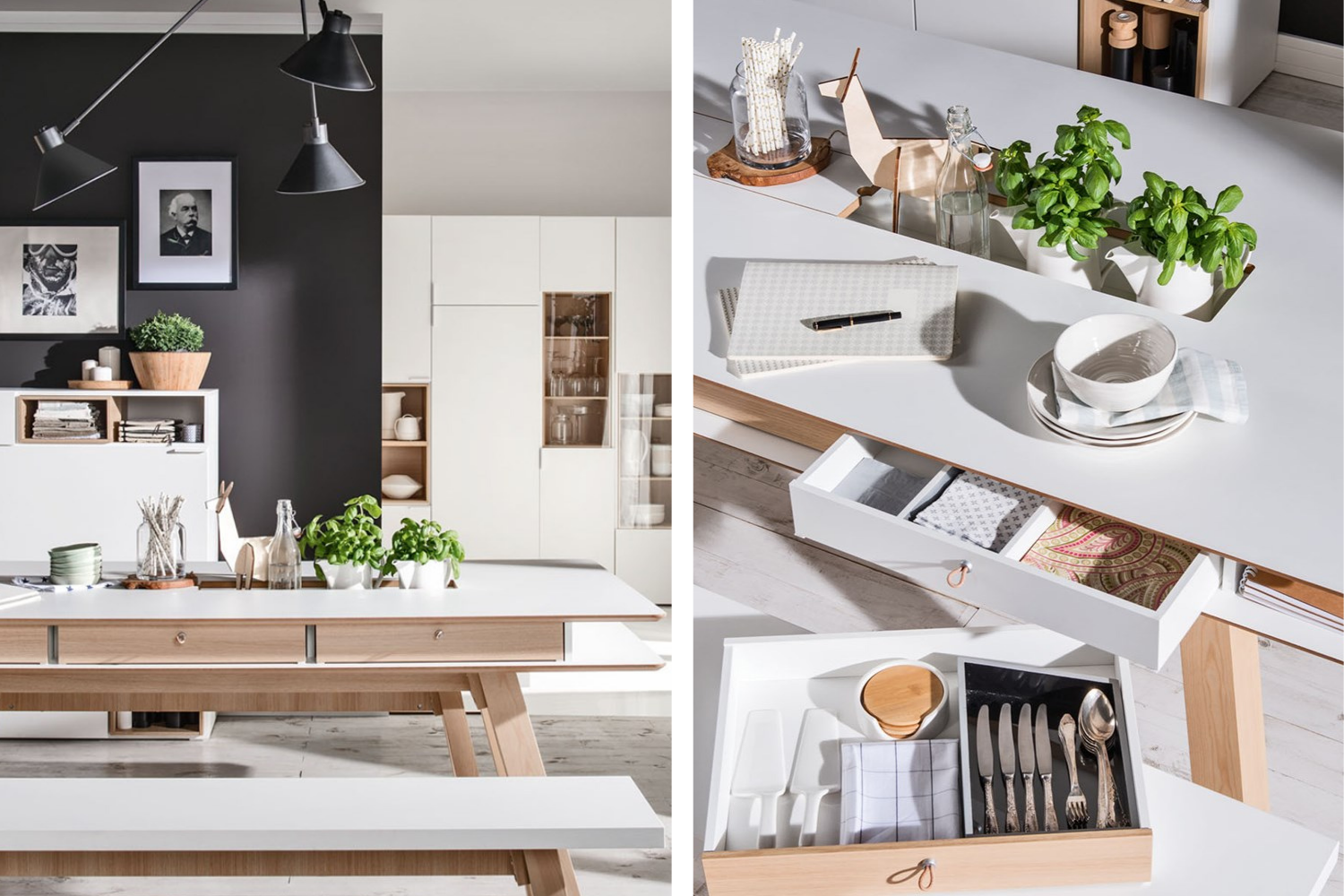
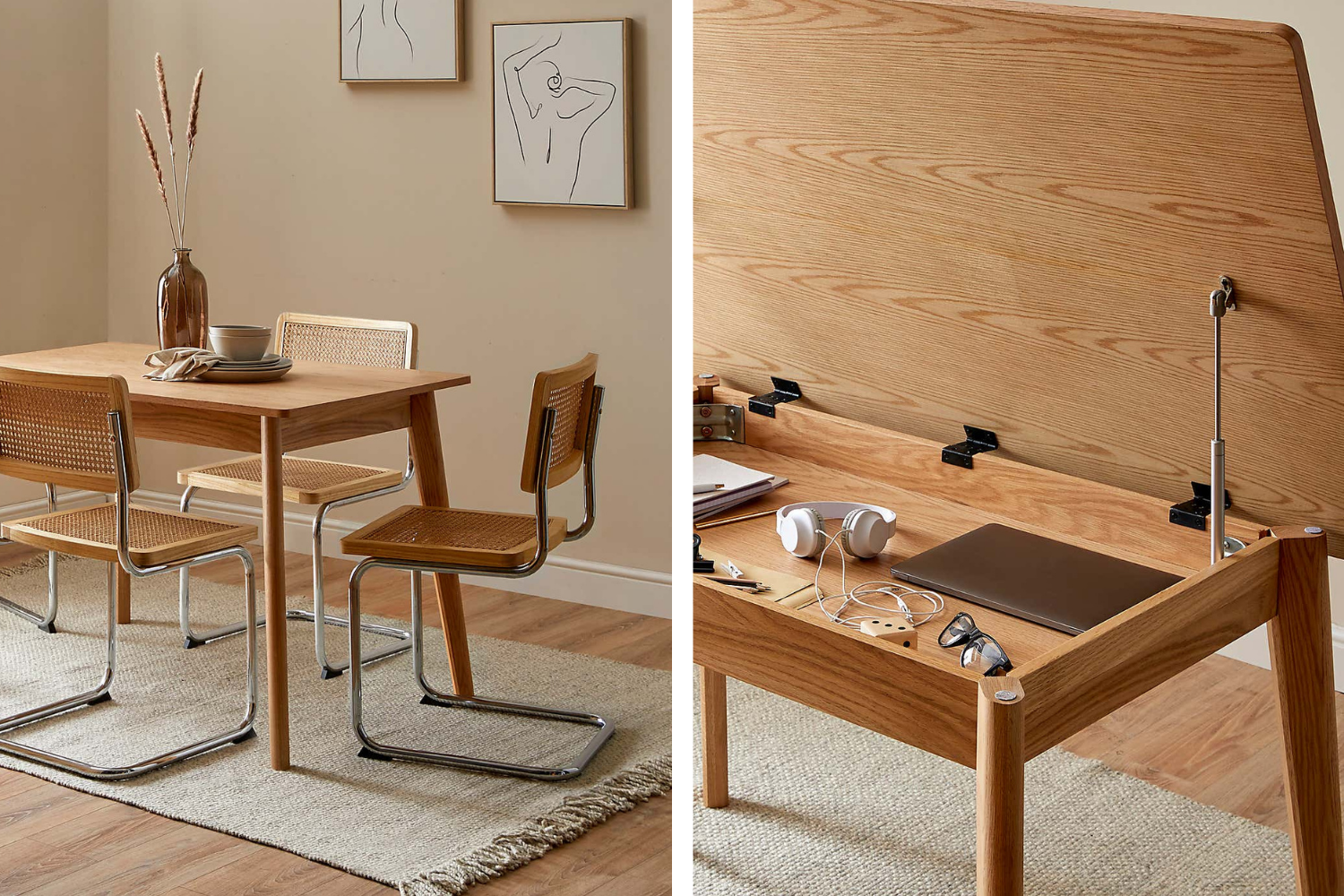
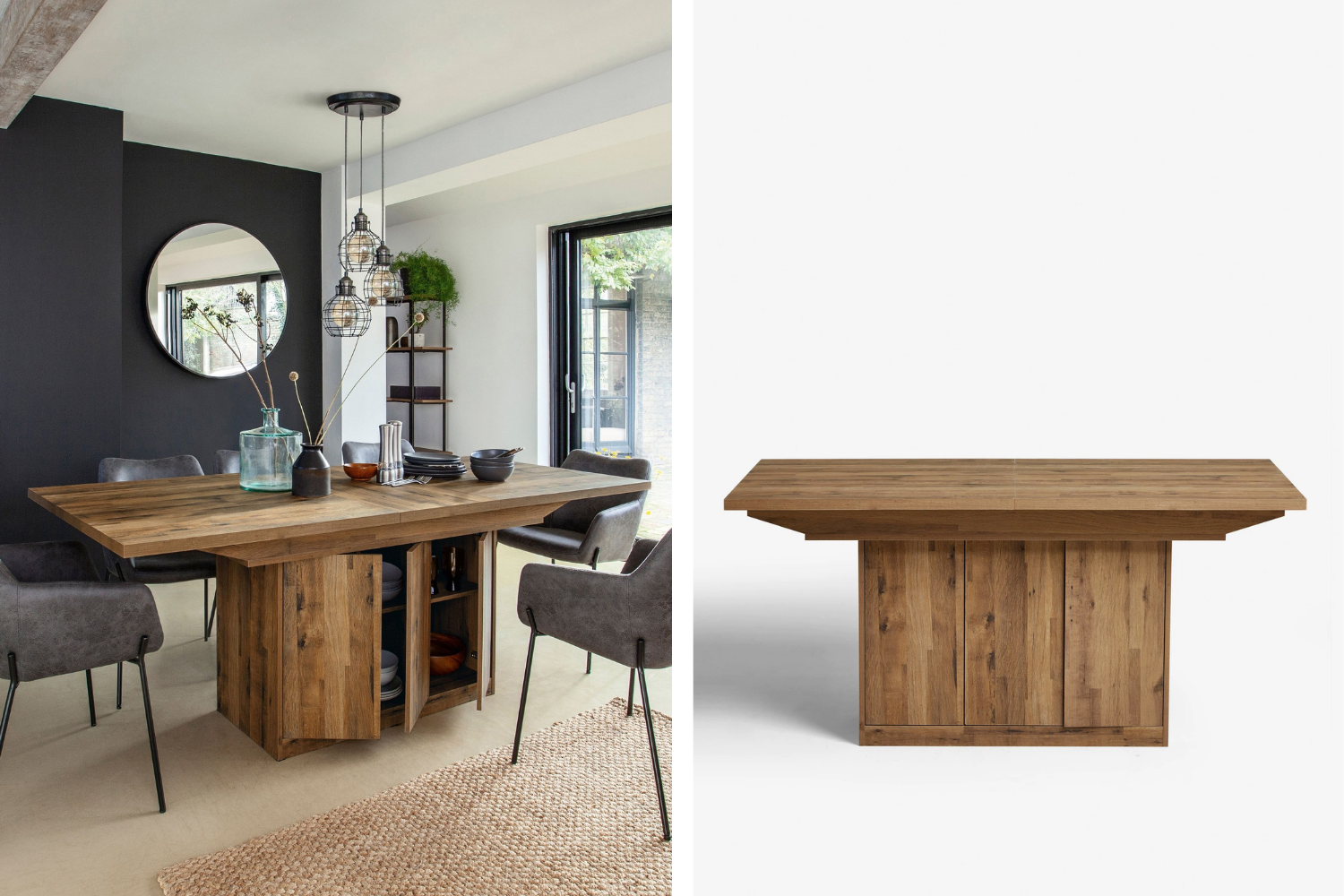
MATERIAL / TABLE FINISH
Wood is by far the most reliable material for a dining table and is the most popular. It is versatile, has a sturdy construction, and can be sanded down, re-varnished, and refurbished to keep it looking its best. Composite and engineered wood like plywood or MDF is fairly durable but not as much as hardwood. Hardwood is available in oak, mahogany, maple, walnut, etc, and is best for tabletops, but is also the most expensive.
Marble is one of the prettiest and timeless materials that add a sense of luxury to its surroundings. Often seen on kitchen worktops or islands, but can be found on (expensive) dining tables too. It’s easy to clean and durable when cared for properly.
Glass tabletops are visually elegant and are a good option for spaces that need to feel a little lighter and brighter, you may not think a glass tabletop is a good surface to eat your hot meals on, but modern glass tables are made with tempered glass that resist scratches, heat and won’t shatter easily.
Metal tabletops are common in restaurants and kitchens, but they are becoming popular for those who are going for a contemporary or industrial look at home. They are cool to the touch, easy to clean, scratch-resistant, and less expensive than wood (by a lot).
STYLE
You might already have a vision in mind for the style of your dining table, but have you thought about how it will complement its surroundings?
It could become the focal point of your entire room or gracefully blend in with your current decor.
Of course, there’s the option for modern and contemporary or sticking with traditional and classic designs, but the world of styles doesn’t end there...
MID-CENTURY MODERN
Pictured: Milton & Rayner Dining Set from Cult
Mid-century Modern is all about embracing those smooth organic curves, sleek geometric lines, and a mix of materials.
Blending nature and architecture, Mid-Century Modern emerged in the late 1930s to the 1960s thanks to the creative minds of Bauhaus designers and architects.
You’ll usually find this style of furniture with skinny angled peg legs that are made with solid woods like rosewood, elm, and beech.
If you want a cool retro-looking dining table that boasts top-notch craftsmanship and understated elegance, opt for Mid-Century Modern.
MODERN FARMHOUSE
The modern farmhouse style blends together elements of contemporary design with the cushy charm of traditional farmhouse aesthetics.
It’s important to note that ‘modern farmhouse’ differs from the ‘classic farmhouse’ look, which tends to be a touch more rugged and rustic.
When it comes to modern farmhouse dining tables, you can expect neutral tones and craftsmanship from natural materials such as wood, giving off a warm and inviting vibe.
SHABBY CHIC / FRENCH COUNTRY
No dining table blends romance and vintage quite like a shabby chic table can!
Shabby chic furniture is where rustic charm meets baroque glamour, complete with ornate accents and distressed finishes.
And when it comes to colours, think soothing neutrals and gentle pastels—the kind that can create a serene atmosphere wherever they’re placed.
ECLECTIC
When we say something is “eclectic,” we’re talking about pulling inspiration from all sorts of places – a real melting pot of ideas, tastes, and styles.
So with an eclectic dining table, you get a bold mishmash of materials and design.
This round table from West Elm does just that by mixing a chic white marbled tabletop with an antique brass conical pedestal base, creating a striking blend of old and new.
INDUSTRIAL
If you are looking for a dining table that’s not only eco-friendly but also built to last, and exudes a unique, rustic charm with its chunky tabletop showcasing natural markings, then you might just fall in love with an industrial dining table.
These dining tables are often made with steel and wood - and not just any wood. It is usually reclaimed from warehouses and factories, so you know it means business!
FAQs
-
Selecting the perfect material for your dining table is quite the decision, and for good reason:
Durability: Think of this as the backbone of your table’s longevity. The material you choose determines how well it’ll hold up against the inevitable spills, scratches, and daily wear and tear. A sturdy material means your table can soldier on for years without constantly needing touch-ups or replacements.
Maintenance: Each material comes with its own set of care instructions. Some, like solid wood, demand periodic polishing or refinishing, while others, such as glass or metal, are a breeze to wipe clean. It’s crucial to weigh your lifestyle and how much effort you’re willing to put into upkeep when picking the right material.
Aesthetic Appeal: Let’s not forget about the vibe your table brings to the room. Whether you’re drawn to the relaxing warmth of wood, the modern elegance of glass, or the industrial chic of metal, your choice sets the tone for your space. Finding a material that meshes well with your decor and personal style ties everything together beautifully.
Functionality: Your table should cater to your specific needs. For instance, if you have little ones running around, a material that can take a beating without showing it might be a top priority. On the other hand, if you're a social butterfly who loves to host gatherings, easy-to-clean surfaces could be a lifesaver.
Cost: Let’s talk money. The material you opt for can have a significant impact on your wallet. While some may seem like a steal at first, they could end up costing you more in maintenance or replacements down the line. It’s all about balancing your budget with the long-term durability and upkeep costs to make the smartest choice possible.
-
The most popular shape for a dining room table is the rectangular shape. Rectangular tables are versatile, seamlessly blending into various dining environments, from formal dining rooms to open-plan kitchens.
They offer ample surface area for serving food and accommodating guests, making them a practical choice for many households.
The rectangular shape of dining tables often complements the linear design of dining rooms, providing a balanced look to the space.


